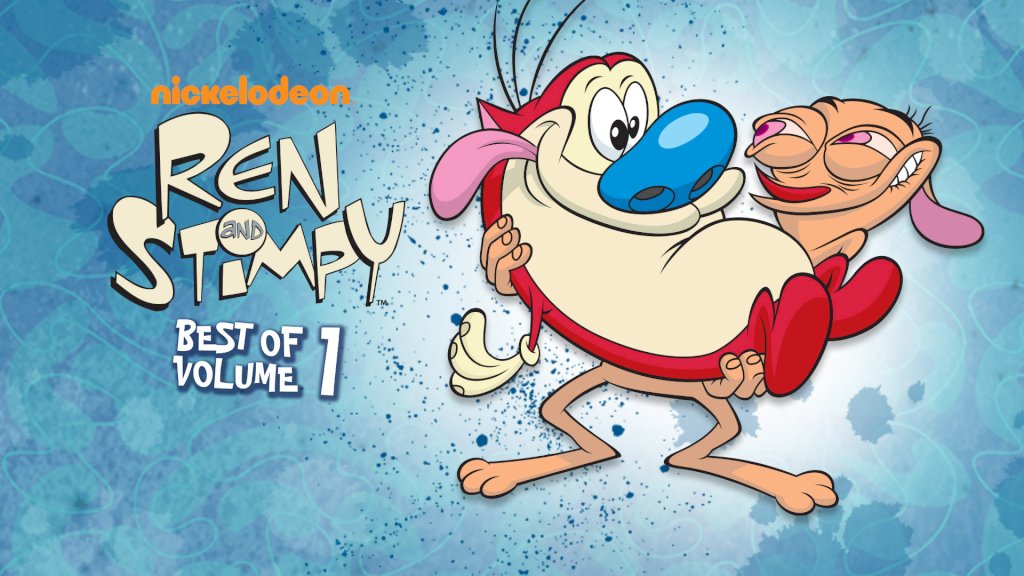The Ren & Stimpy Show, a groundbreaking and controversial animated series that aired from 1991 to 1996, holds a unique place in the history of television animation. Created by John Kricfalusi, the show introduced audiences to the bizarre and often disturbing adventures of Ren Hoek, a neurotic Chihuahua, and Stimpson J. Cat, a dim-witted but lovable cat. With its unconventional humor, gross-out gags, and surreal storytelling, The Ren & Stimpy Show left an indelible mark on the world of animation and pop culture as a whole. In this article, we will explore the television show's origins, its impact on the industry, the controversies it courted, and its lasting legacy.

The Birth of Madness
 The seeds of
The seeds of
"The Ren & Stimpy Show" were planted in the minds of two eccentric artists, John Kricfalusi and Bob Camp. Kricfalusi, known as John K, and Camp, both shared a passion for unconventional animation and a desire to break free from the constraints of traditional children's cartoons. Their creative collaboration would go on to spawn one of the most distinctive and controversial animated series in television history.
In 1990, Kricfalusi and Camp pitched their unique vision to Nickelodeon, a cable network primarily known for its kid-friendly programming. Despite concerns about the show's dark and irreverent tone, Nickelodeon took a gamble and greenlit "The Ren & Stimpy Show." This move would prove to be a game-changer for the world of animation.
The Chaotic World of Ren & Stimpy

Ren Höek and Stimpson J. Cat
At the heart of the show were its titular characters: Ren Höek, an emotionally unstable Chihuahua, and Stimpson J. Cat, a dimwitted but lovable cat. The odd-couple dynamic between Ren's manic outbursts and Stimpy's blissful ignorance formed the core of the show's humor.
Surrealism and Subversion
"The Ren & Stimpy Show" was a surreal and subversive experience. The show reveled in grotesque close-ups, exaggerated facial expressions, and slapstick violence, all set against a backdrop of absurdity. It pushed the boundaries of what was considered acceptable in children's entertainment, often leaving viewers and censors perplexed.
Controversy and Censorship
Censorship Battles
The show's relentless pursuit of pushing boundaries and testing the limits of taste led to numerous clashes with Nickelodeon's standards and practices department. Episodes were frequently delayed, altered, or rejected, sparking a creative tug-of-war between the network and the show's creators.
Cultural Impact
Despite the controversy, or perhaps because of it, "The Ren & Stimpy Show" became a cultural phenomenon. It attracted a dedicated fanbase and garnered critical acclaim for its groundbreaking approach to animation. It also paved the way for other boundary-pushing animated shows in the years to come.
The Legacy of Laughter

Influence on Animation
The impact of "The Ren & Stimpy Show" on animation cannot be overstated. It opened the door for more adult-oriented animated series like "South Park," "Family Guy," and "Adult Swim" programming. Its unique visual style and comedic sensibilities continue to influence animators and creators to this day.
Iconic Characters and Catchphrases
Ren and Stimpy left an indelible mark on popular culture, with catchphrases like "Happy, happy, joy, joy" and "You eediot!" becoming part of the cultural lexicon. The characters' distinctive voices, provided by Kricfalusi and Camp, added to their enduring appeal.
The Dark Side of Ren & Stimpy

Behind-the-Scenes Turmoil
While the show achieved great success, the production of "The Ren & Stimpy Show" was plagued by tension and controversy behind the scenes. John Kricfalusi's perfectionism and unorthodox working methods led to clashes with Nickelodeon, and he was eventually fired from the show in 1992.
Controversies Surrounding Kricfalusi
In recent years, the show's legacy has been tarnished by allegations of misconduct against Kricfalusi, including inappropriate relationships with underage fans and colleagues. These revelations have cast a shadow over the show and its creator, sparking discussions about separating art from the artist.
A Look Back at the Episodes

Memorable Episodes
"The Ren & Stimpy Show" featured a wide array of memorable episodes, from "Space Madness" to "The Royal Canadian Kilted Yaksmen." Each episode brought its own unique brand of absurdity and humor, leaving a lasting impression on viewers.
Themes and Satire
Beneath the surface, the show often tackled social issues and parodied various aspects of pop culture. It used its irreverent humor to satirize topics such as consumerism, politics, and celebrity culture.
Revisiting Ren & Stimpy

Revivals and Reboots
In the years since its original run, "The Ren & Stimpy Show" has seen several attempts at revival and reboots. These endeavors have faced mixed reactions from fans and critics, highlighting the challenge of capturing the magic of the original series.
Nostalgia and Resurgence
Despite its controversies and the passage of time, "The Ren & Stimpy Show" continues to hold a special place in the hearts of fans who grew up with it. The show's enduring popularity has led to merchandise, conventions, and a resurgence of interest in its unique brand of humor.
Conclusion: The Enduring Madness of Ren & Stimpy

In conclusion, "The Ren & Stimpy Show" is a testament to the power of creativity and innovation in the world of animation. It broke new ground in terms of artistic style, humor, and storytelling, leaving an indelible mark on the medium. Despite its controversies and the challenges faced by its creators, Ren and Stimpy's madcap adventures continue to captivate audiences and inspire a new generation of animators. As we look back on this chaotic masterpiece, we can't help but appreciate its enduring legacy and the impact it had on the world of animation and popular culture as a whole.

